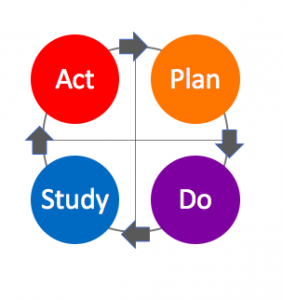
Any organization that wishes to innovate must be able to develop new products. The ability to develop new ideas, and new products in particular, can be stimulated and increased systemically by addressing the “cognitive limits” of the organization using the Thinking Processes from the Theory of Constraints. The capacity to continuously innovate has become a necessity today and it can be learned. This is certainly the first step in New Product Development.
Sometimes, however, the problem is not a lack of ability to develop new ideas or products, but the ability to design and execute a precise plan and to manage a project, whether simple or complex.
There are two key aspects here:
- the speed with which we develop an innovation or new product
- actual project management
In the Decalogue approach, we make recurrent use of W. Edward Deming’s PDSA cycle. This consists of four phases, the first of which is PLAN, the second is DO, the third is STUDY and the fourth is ACT. It is essentially a way of applying the scientific method to how we operate.
When a change or a new product is planned, this phase represents the beginning of the entire cycle.
What normally happens is that, due to our excitement about the new idea and eagerness to achieve the goal, we dedicate little time to detailed planning and we try and show immediately that we can get results. We try and skip the planning phase.
However, to have success with a new product we have two needs we must not ignore:
- Speed in the execution phase
- Time dedicated to planning phase
Intelligent Management uses a very precise method to plan projects based on the Critical Chain algorithm.
Thinking New Product Development through
Making use of the Thinking Processes in designing and rolling out a new product is fundamental. Let’s see how.
Once we have correctly verbalized the goal, we can list the obstacles that stand between us in our current reality and achieving the goal in the future. We then transform this set of obstacles into a set of macro actions, one for each obstacle, that allow us to overcome the obstacle. These macro actions are called “intermediate objectives”.
These intermediate objectives are not all equal, in that they cannot all be carried out at the same time. When they are correctly sequenced they become a network of macro actions that in the Theory of Constraints is called a Prerequisite Tree (PRT).
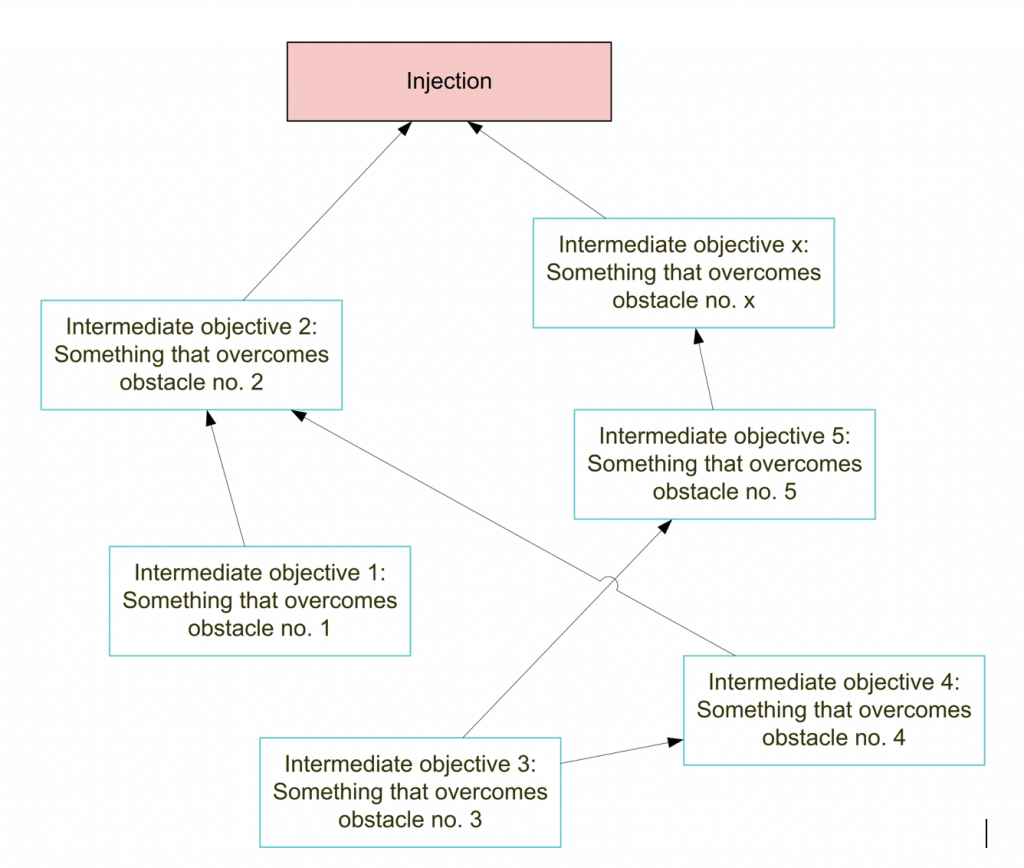
However, we are still not ready to schedule a project.
The intermediate objectives are still too onerous, and the next step is to break them down into 3-4 simple actions that will allow us to achieve them. These actions are then placed into a logical sequence using a network of cause and effect actions to verify their completeness. This network is called a Transition Tree (TRT).
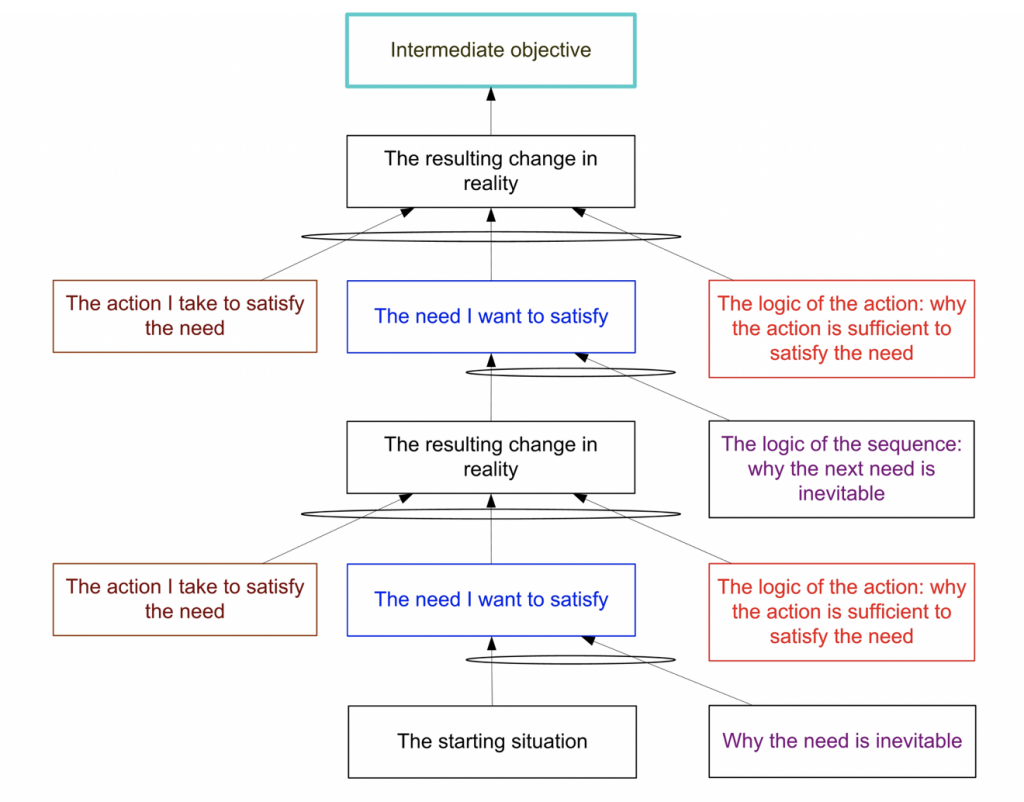
Now we are ready to schedule a project. We assign a reasonable duration to each action from the various TRTs, and this duration must be realistic and not in any way ‘buffered’. We make a precise list of the resources available in the organization, grouped according to skills, and assign the resources necessary so each action can be completed, considering the resource to be completely dedicated to a specific task for the specific duration (no multi-tasking). At this point we solve any contention of resources.
Now we have a sequence of actions, some of which are prerequisites of others, that make up the various chains. The longest chain of interdependent actions, taking into consideration the sharing of resources (finite capacity), becomes the Critical Chain. This is the constraint of the project. It is the factor that determines how the project comes in on time and within budget.
A project is a system
But how do we manage a project? How can we check that everything is being carried out correctly?
First of all, we do not use milestones. In other words, we do not consider the completion of single tasks as significant. Often, the completion of a single task is emphasized positively, while the overall project is behind schedule. Even if 95% of a project is completed, it is still a failure. Projects have to be 100% complete to be successful. Single tasks are necessary because they are part of the project, and in this sense a project is a system.
Last but not least, we have to take into account variation. Variation exists and influences every task and this impacts the project and its completion. The way we deal with this fact of nature is not to protect the individual tasks with fake buffers that only serve to guarantee that a resource completes their task in time. The only protection we must guarantee is to the constraint. The correct action, therefore, is to buffer the Critical Chain (normally about 20% of the length of the total project), and then monitor the buffer’s consumption (buffer management) using Statistical Process Control. Therefore, applying SPC is crucial to our understanding of how the project is progressing.
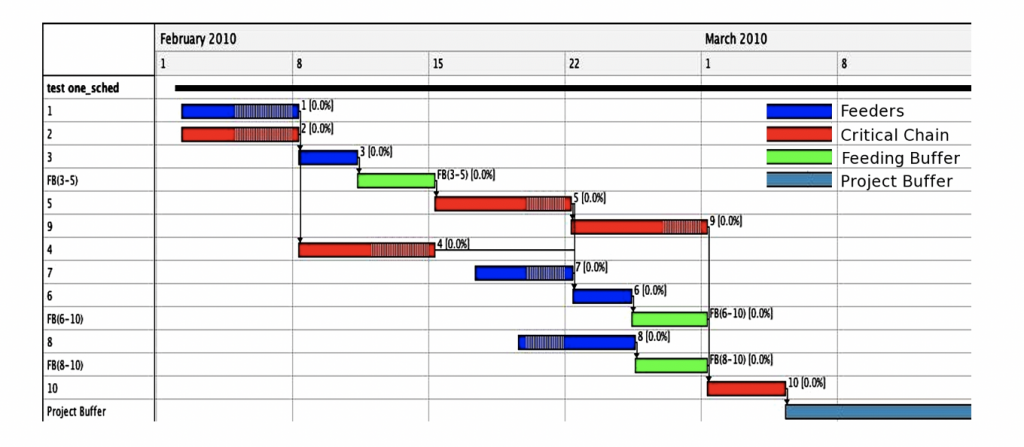
Intelligent Management uses a proprietary software called ‘Ess3ntial’ for finite capacity scheduling of projects that uniquely applies SPC to monitor the behaviour of the buffer. The main feature of Ess3ntial is that it enables the scheduling of the competencies that each resource possesses, in this way allowing optimal use of all the talents available in the organization.
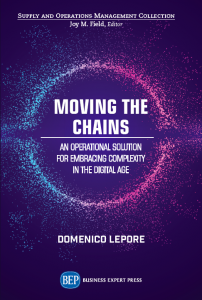





Leave a Reply